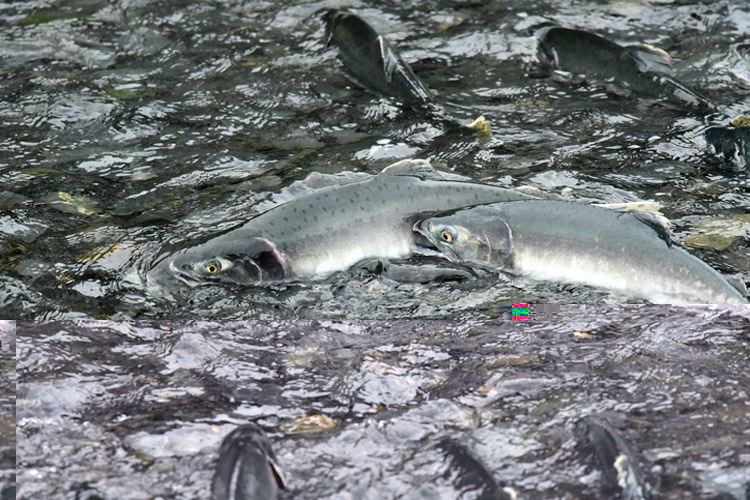The authors of a report into the state of the salmon runs reaching the Nechako and Upper Fraser regions say a close look should be given to establishing a full-fledged hatchery on the river to help bring the number of chinook back up to a healthy level.
It's among three recommendations David Levy and Peter Nicklin have made on behalf of the Upper Fraser Fisheries Conservation Alliance (UFFCA) and the Nechako Fisheries Conservation Program (NFCP) in a report completed in September after finding just 588 of the species on spawning grounds in 2017.
The Spruce City Wildlife Association operates a volunteer-driven hatchery on River Road but what Levy said what he and Nicklin have in mind are a "couple orders of magnitude larger" in terms of the numbers of fish involved.
Fish released from the hatchery would also injected with a metal tag that can be detected with the appropriate technology while they're in the ocean.
Improving the state of the Nechako chinook would also help the southern resident killer whales, which are also in dire circumstances and also happen to hunt that particular run as it enters the Fraser, Levy noted.
Both SCWA president Steve Hamilton and Cariboo-Prince George MP Todd Doherty, who is the Conservatives' fisheries critic, expressed support for the idea.
"That's something Spruce City has been pushing for for quite awhile now so we're hugely behind it," Hamilton said.
Levy and Nicklin are recommending a "feasibility evaluation" but Doherty is calling for quicker action.
"I'm not sure we need to do a feasibility study," he said. "I think we've got great information today as it is."
The UFFCA is a First Nations-run organization and the NFCP was formed in 1987 to monitor the effectiveness of conservation measures for the chinook and migratory sockeye salmon runs as set out in the settlement agreement between the federal and provincial governments and Rio Tinto.
It sets out a "conservation goal" of 1,700 to 4,000 spawning chinook and since 1988, that goal has been met every year with the exception of five years. The highest count was in 2015 when 8,300 were tallied.
In October, while Levy and Nicklin were working on their report, the Committee on the Status of Endangered Wildlife in Canada listed the Early and Late Stuart sockeye as endangered by. The authors consequently called for a recovery plan for the two runs along with improved ocean-based monitoring of the Upper Fraser chinook.
Hamilton said SCWA volunteers were able to gather a mere 1,200 eggs from Upper Fraser chinook this year and had to go to rivers near Quesnel to get them.
"The numbers aren't what they should be, what they used to be, but we're hopeful that they can get there again and this proposal that the UFFCA has put out is great and we hope that it gets some solid support," Hamilton said.
The federal government's fall economic statement issued last week included $100 million over six years to create a British Columbia Salmon Restoration and Innovation Fund. It will "focus on salmon habitat protection and restoration as well as ensuring the fish and seafood sector in British Columbia is positioned for long-term environmental and economic sustainability," according to a Department of Fisheries and Oceans press release.
Details on eligibility, project criteria and application are to be made public in the coming weeks.
The full report is posted with this story at www.pgcitizen.ca.



